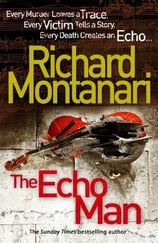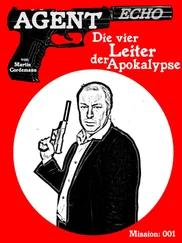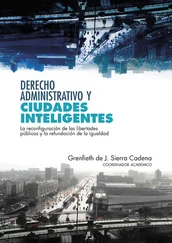I read this account twice. There was a tone about it, an underlying sarcasm, more spiteful than I would have thought appropriate to a diary piece. That said, being arrested, when you were a woman of quality, was not a light-hearted occurrence eighty years ago. And the Boytes were of quality, both. Patrick was prosperous-looking. The light in the picture exposed the vivid detail of a sunny late-summer day. Patrick Boyte, bald and sturdy and tall, glowered in tailored broadcloth with a thick gold watch chain worn across his waistcoat, and a waxed collar and silk necktie. The hand not gripping his daughter’s carried a hat and a cane. Jane was svelte and groomed with bobbed hair and wearing a light summer coat.
It reminded me of the contemporary reportage about the suffragettes I’d read at university, the tone of the piece. It was characterised by the same wise, condescending mockery as those stories had been. But it had been written two decades too late for Jane’s crime to be anything to do with the struggle to win votes for women.
And the Boytes had been set up, the Post tipped off. Cameras in those days did not take pictures of this quality without a tripod and careful preparation. The distance had been exactly judged and the bright light metred. Someone in the Liverpool police had helped engineer this public embarrassment. The pair had been ambushed on the station steps. It made me wonder what Jane Boyte had done to provoke such hostility. It made me wonder what she had done to get herself arrested.
But that wasn’t what chiefly intrigued me. What really struck me, looking at it, was the image of Jane Boyte herself. She shared her father’s deep expression of indignant fury. She was fiercely beautiful. And she looked so similar in her physique and facial features to the woman standing next to me that she and Suzanne could have been sisters. I folded the page back into four and put it on top of its envelope on the table.
‘Jane Boyte could have been your twin.’
‘There is a resemblance. She’s a similar type to me. At least, she appears so in that particular photograph. But that’s not the point.’
And neither was the arrest. Patrick Boyte was the point, and what he chose not to say to the reporter from the Post about the job he had carried out for Harry Spalding.
‘I don’t think what you have told me tonight about poor Frank Hadley is happening for the first time,’ Suzanne said. ‘I think it’s all happened before.’
‘There’s more, isn’t there?’ I said.
She nodded. ‘There’s more.’
We went to the pub. It was ten o’clock and, of course, she was tired from the delayed flight. But we went anyway because Suzanne said that what she wanted to tell me would be better said over a drink. We went to the Windmill around the corner from the flat in Lambeth High Street and found a corner table to the rear of the virtually empty pub. It was fittingly nautical. There were old framed prints on the walls of barques and schooners and tugs from the passed age of the Thames as a working river. Some of them could have been taken as recently as the 1960s. But they all seemed distant and antique, so thoroughly lost in time were they.
His boat had belonged to two illustrious owners after Spalding’s death. The first of these was a Boston speculator who became seriously wealthy after being one of the very few men to see the Crash of 1929 coming. Everyone with any brains knew there would be a stock market crash eventually. Most believed it was a self-fulfilling prophecy. But Stephen Waltrow guessed it to the week. His buying of Spalding’s boat caused a minor stir on the society pages of the Boston and New York newspapers. Spalding wasn’t quite cold in his grave when Waltrow made the purchase. And the Crash itself was what most people assumed had provoked the young man’s suicide.
In that, they were very much mistaken, Suzanne said. I sipped from my pint of bitter. There was music playing in the pub. Thankfully, it wasn’t Josephine Baker. Billy Paul was lamenting his way through ‘Me and Mrs Jones’.
Stephen Waltrow was a twin. As boys, he and his brother had sailed dinghies. Their upbringing had been lower middle class. But they had grown up close to the harbour and their father had been a keen boatman and had taught them to sail when they were still in knickerbockers. They had an aptitude for it. They were skilled, resourceful and hardy. At the age of fourteen, they were embroiled in a yachting tragedy when six dinghies involved in a race around Boston harbour were hit by a squall so sudden and savage that there was no real warning of it. Four of the dinghies had capsized and sunk. Seven boys were drowned. It was a wait of nine anxious hours and darkness had long fallen before the Waltrow boys nursed their battered boat back to the slipway from which they had launched. They were shaken and had lost friends. But with the cold resilience of children, they were back on the water the following weekend.
Kevin Waltrow did not share his twin’s business acumen. He became a cop. But when Stephen acquired Spalding’s boat, he was only too happy to weekend aboard her when he could. Unlike his bachelor brother, Kevin was married with two young children and his new weekend hobby was the cause of some friction at home. This was especially true when, three months after buying her, Stephen suggested the brothers spend an Easter week sailing Dark Echo to Long Island and back.
A donation made by Stephen to the Boston Constabulary Benevolent Fund seems to have been what secured Kevin sufficient holiday time to go along on the trip, Suzanne said. What his wife had to say about it wasn’t known. Nothing much was known after the boat set off early on the morning of April 4, 1930 into a clear day and a stiffening onshore breeze from Boston harbour. Certainly nothing was reported, though the vessel was equipped with a high-grade Marconi set. Nothing was known or suspected until she was found eight days later, drifting 150 miles offshore, unmanned and travelling lazily with the current.
She was towed back to New Jersey and impounded and searched. Nothing significant was found aboard her. Of the brothers Waltrow, there was no sign at all. Eventually, a month later, she was towed back to Boston. Here, perhaps because of Stephen’s wealth or perhaps because of Kevin’s status as one of Boston’s finest, she was searched more thoroughly and a primitive forensic examination was carried out.
‘Did they find anything?’
Suzanne sipped her drink. ‘They found quite a lot of blood. It looked as though the brothers might have been fighting. One of them could have been cut on a gaff or something. Accidents occur on boats all the time. But the boys were of different blood groups. And both types were present in fairly liberal quantities.’
‘Anything else?’
She nodded. ‘Stephen Waltrow’s chequebook. It was in a drawer in a bureau in the master cabin. That, too, was blood-smeared. In black ink, in his own hand, he had scrawled five words on the back of it. One sentence: “To be with the others.”’
‘Did the mystery create much of a stir?’
‘Not really. It occurred at a tumultuous time in American life. The country was short neither of scandal nor sensation. But it was the subject of a sort of probe. That’s where I got most of my information.’
The investigator was a man called Ernie Howes. Howes was a former cop and private eye who had turned to psychic investigation in the aftermath of the Great War when the collective grief of desolate parents created a boom for self-styled experts in reaching lost sons beyond the grave. Howes ran a lucrative line in exposing fake mediums. But he also fed the appetites of the gullible by filing news stories with an occult slant of his own whenever he could.
Читать дальше












